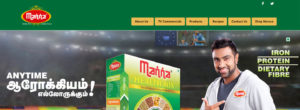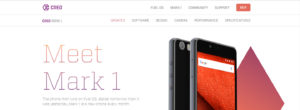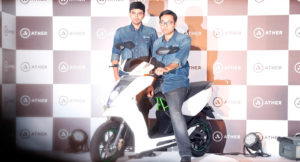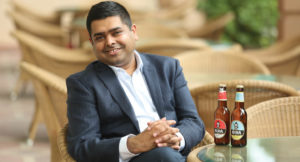Rohan Mirchandani, the founder of Hokey Pokey Ice-cream, now wants to scale up the company by balancing two businesses – the original parlor business and stocking the product in modern retail
When I ask Rohan Mirchandani, the Wharton wala founder of Hokey Pokey ice creams what is the one significant positioning he wants to achieve through this business, he says, to break the myth that only foreign branded ice creams are of good quality. “Maybe you won’t get an ingredient for as cheap as Rs. 20 in India, but if you build the right network and are willing to shell a little more, you can secure high quality products at an acceptable price,” he reasons. And that is what Hokey Pokey set out to do when it was founded in 2008; to create and sell Indian-made premium branded ice creams to its customers.
When we last spoke to Mirchandani in March 2013, the company (under its parent brand Drums Food International Pvt. Ltd.) had been recording a growth rate of 20 per cent with 20 outlets spread across key locations such as Maharashtra, New Delhi and Bengaluru. Convinced that the Tier-I market was already saturated, the team looked to target the Tier-II and Tier-III markets with its premium quality ice creams and achieve a target of 150 outlets in two years. However, that mindset changed a year further into business, when the founding team realised that there lay a challenge and an immense opportunity in selling its products to the Tier-I market itself and competing with the bigger, well-established players. “We noted that our customers loved our products despite there being several well-established players in the premium segment. Added to this, was the fact that we were targeting an audience which had global exposure and was willing to move past the foreign brand tag and pay more attention to a product’s value proposition,” he explains.
Thus, around April 2014, the team made its first pivot in business; to expand by taking the FMCG retail route while retaining and continuing to grow its parlour business. “From a scalability standpoint, though we wanted to setup stand-alone parlours, it would only result in a linear growth. We would have to put in more energy and effort into achieving the kind of exponential growth we wanted,” says Mirchandani. The company began making its best-selling products available at premium retail outlets across the country and currently, its products are available in close to 800 outlets across key metros including New Delhi, Mumbai, Bengaluru and Chennai.
Taking the right steps
Arriving at an effective location strategy is an art more than a science believes Mirchandani. On a particular street, there might be three ice cream parlours located at close quarters, yet the one that catches a customer’s attention will be the one that invests in creating the right ambience, design and art. This, of course, in addition to the fact that the staff is well-trained to sell high-quality products. “We are attempting to bring a Cold Stone (a US-based ice cream brand) like experience in the country and this requires that the staff is adequately skilled to prepare it. We don’t want to hire staff for the sake of opening an outlet in a particular location,” he states clearly.
When recruiting for the core team, Mirchandani states that the strategy was different during the early stage and the scaling up phase. “Until now, the idea was to join a team that was doing something special; taking on the F&B giants in creating a premium quality product in India. Now, we want to formalise our channel development and distribution teams, given the sheer pace at which we are growing,” he indicates.
With scale also comes a challenge, in the form of managing supply chain, operations and distribution. But Mirchandani sees this as more of an opportunity given the room for improvisation and learning that it offers.
Funding for growth
Five years post inception, the company raised its first round of angel funding in August 2013, to the tune of US$ 1 million led by Peter Rajsingh (partner at New York-based Casterllar Partners), Shripad Nadkarni (director, MarketGate Consulting and former marketing VP of Coca Cola) and Apurva Salapuria (director at Salapuria Group). “The first round came at a time when we were leveraging the FMCG route. The funds largely went into developing an identity for the brand, expanding production capacity, packaging and distribution,” notes Mirchandani. In April 2015, it raised its pre-Series A round to the tune of US $ 0.8 million from Vishal Narain (country head of TPG Growth), Kanwaljit Singh (founder of Fireside Ventures and former senior MD of Helion Ventures) and existing investor Shripad Nadkarni. “Identifying the right investors for our business came through sheer networking and word of mouth. I met our first investor, Nadkarni, when he was a guest lecturer at Wharton. I stayed in touch with him and he eventually invested in the business and gave valuable inputs on the branding and marketing front. In fact, even the other investors came on board largely through networking than the formal channels,” he notes while adding that it is vital to raise funds from investors you share a good rapport with rather than going with ones who are available to you.
Creating the buzz
The marketing team at Hokey Pokey follows an interesting motto when designing its strategies; ‘when it comes to advertising, we are the poorest. When it comes to ice cream as a currency, we are the richest.’ Keeping aside the traditional forms of advertising, the company takes a balanced approach to marketing through sampling, innovative packaging and digital marketing. “We go with a strong belief that once someone has tasted our ice cream, that’s enough marketing to keep them hooked on to the brand,” says Mirchandani. The company participates in several events, music festivals and stand-up shows in a year to setup a sampling booth for its potential customers. This apart, it pays close attention to packaging, ensuring it is ergonomically sound. “We have designed our boxes in such a way that they are bound to catch your attention when you walk into a retail outlet. In fact, we also encourage you to reuse the box at your homes. That creates enough brand recall for us,” he chuckles.
A third and quite widely used strategy is digital marketing. “We don’t just promote our products and offers. Two team members and I get involves personally to respond to each query thus creating a brand personality,” he opines.
Priced at Rs. 195 to Rs. 250 for a 500ml tub, Hokey Pokey’s products penetrate the retail shelves across the country to eliminate the stigma that foreign made products are better, especially in the F&B segment. “We want to disrupt the dairy space with our products, packaging and design and be viewed as a large value-added dairy queen in the coming years,” he says, on a parting note.
| Then | Now |
| Expand by way of stand-alone parlours through franchises and collaborations | Pivot the model to include distribution through modern retail |
| Plans to open 150 outlets across Tier-I, Tier-II and Tier-III markets in two years | Present in 800 modern retail outlets across key metros while simultaneously expanding the stand-alone parlour business |
| Funded primarily by the partners’ capital and by investments made by family and friends | Raised two rounds of angel funding from investors such as Peter Rajsingh, Shripad Nadkarni, Kanwaljit Singh, Apurva Salapuria and more |
| Recruit employees with the belief of taking on the F&B giants in creating a premium quality product in India. | Formalise recruitment channel to match the pace of growth set by the company |





